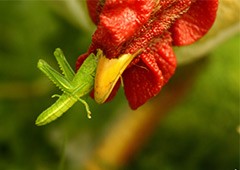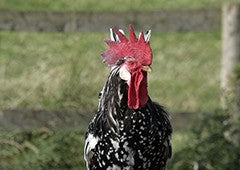Have visions of fruit trees brimming with fresh oranges, lemons and limes in your yard? Perhaps a fruitful mango tree has your mouth watering. Or, maybe you’re a bit short on space, and would prefer a pot of fresh berries that you can pick produce off.
There’s nothing tastier than a fresh fruit salad made from an assortment of our own ripe pickings. Or, a freshly squeezed juice from our home-grown produce. If you’re new to the gardening game, you might not know where to start, or what to grow in your area. Well, you can hit the ground running with this abc’s of gardening guide, designed for absolute beginners!
1. Fruit Trees - citrus, pears, stone fruits

Ah, fresh fruit off the tree.Is there any more satisfying snack? Who doesn’t love the sweet taste of freshly squeezed orange juice. Or the dribbling, oozing goodness when we bite out of a just picked nectarine. Well, if you’ve got the room, you can plant your own fruit trees so you can enjoy freshly squeezed oranges, lemons and limes, as well as juicy pears, nectarines and peaches.
When to plant:
The best time to plant fruit trees is in the winter.
Growing conditions:
Every fruit tree needs to grow in full sunlight. If you’re growing more than one tree, they also need to be spaced out as they are a larger plant than most. You want your trees to have ample room to grow - it makes pruning and maintaining the plant much easier!
Also, fruit trees need to be planted in well drained soil. This means that the soil allows water to trickle through it evenly and efficiently rather than pooling or welling up.
Can I grow fruit trees in an apartment?
You can grow fruit trees in pots, so if you’ve got somewhere it can reach full sun - go for it! Just keep in mind that it’s quite a large plant - also fruit trees that grow in pots don’t bear as much fruit as ones that grow in the ground.
2. Watermelons

There’s nothing more refreshing that biting into a crunchy, crisp watermelon on a hot summer’s day! Sweet pink watermelon is one of our favourite fruits - it’s always so refreshing, and they’re so big there’s plenty for everyone to share! Plus, you can always feed some to the chickens for a frozen treat.
When to plant:
Planting in Spring is best for watermelons, when it’s warm.
Growing conditions:
Watermelons love the sun, and need at least 6 hours of sunlight per day to keep growing. They also hate the cold, so those who live in cold-freezing temperatures probably won’t have much luck with this fruit! Watermelons like warm weather without any frost. Don’t over-fertilise your plants with synthetic fertilisers, otherwise they’ll have a hard time growing their fruit!
The young watermelon plants need to be watered regularly, however as they grow older they won’t need as much hydration. Also, watermelons grow on vines - so it’s best to have some sort of trellis and support structure in place for them to grow up. Keep the soil around the plant well mulched. The watermelons are ready to harvest when they grow to their full size, and change from bright green to slightly yellowed.
Can I grow watermelons in an apartment?
You can! However, due to their size, you’ll need to give them some sort of support structure for the vines to grow up, so the fruit doesn’t snap off. You’ll also need a large container to put the fruit and the soil in. Remember, they’ll need to be on a balcony where they can get the 6 hours of sunlight they need.
3. Berries - blueberries, raspberries, strawberries

Mmmm...fresh berries. We love to put berries in our smoothies, mix them with some creamy yoghurt (or ice cream) or just snack on them as they are! Berries can be quite expensive when bought from the shops, so it makes sense to grow your own fresh ones.
When to plant:
Blueberries - Plant in spring/summer.
Raspberries - Plant in winter.
Strawberries- Plant in the end of autumn/beginning of winter
Growing conditions:
Blueberries
Blueberries thrive in the sunlight! So when choosing a good planting spot, make sure that it’s in the sun. Blueberries also like to grow in well drained soil. When it comes to watering, berries prefer rainwater - sensitive little plants that they are! Also, it’s best to steer clear of using any chemicals to keep pests away - berries don’t like that at all. Maybe you could get your chickens to look after the insects instead!
Raspberries
Raspberries aren’t like their blueberry counterparts - they much prefer the cool temperatures. Hence why you should plant in the wintertime! Raspberries should still be planted in a sunny spot in the garden. Plant the seeds in rows (around 1m apart), in well drained soil. Raspberries also grow upwards, so it’s good to have a support or trellis in place for them.
Strawberries
Plant in soil that has had all the weeds and large clumps of soil removed. Strawberries like full sun, so plant in a sunny spot in the garden, around 30cm apart. Water your strawberries regularly, especially when they’re young - thirsty little berries that they are!
Can I grow berries in an apartment?
Yep! You can definitely grow a little plot of berries in your apartment, as they can be grown out of small pots. Just make sure they’re put somewhere sunny, and follow the growing instructions as above.
So, whether you’re a green thumb with lots of land, or a modest apartment balcony, you can still grow and enjoy the fresh flavours of fruit! There’s honestly nothing more satisfying than picking a ripe piece of fruit off the tree/vine that you’ve grown yourself, knowing that it’s fresh and hasn’t been smothered with pesticides.
If you’ve got chickens and are worried that your garden might not be able to withstand their sharp beaks, don’t fret! You can definitely keep both - here’s a guide on making your garden chicken-proof. Plus, chickens eat up all the pests and insects that like to feast on your plants, which is definitely a plus for any green thumb.

















